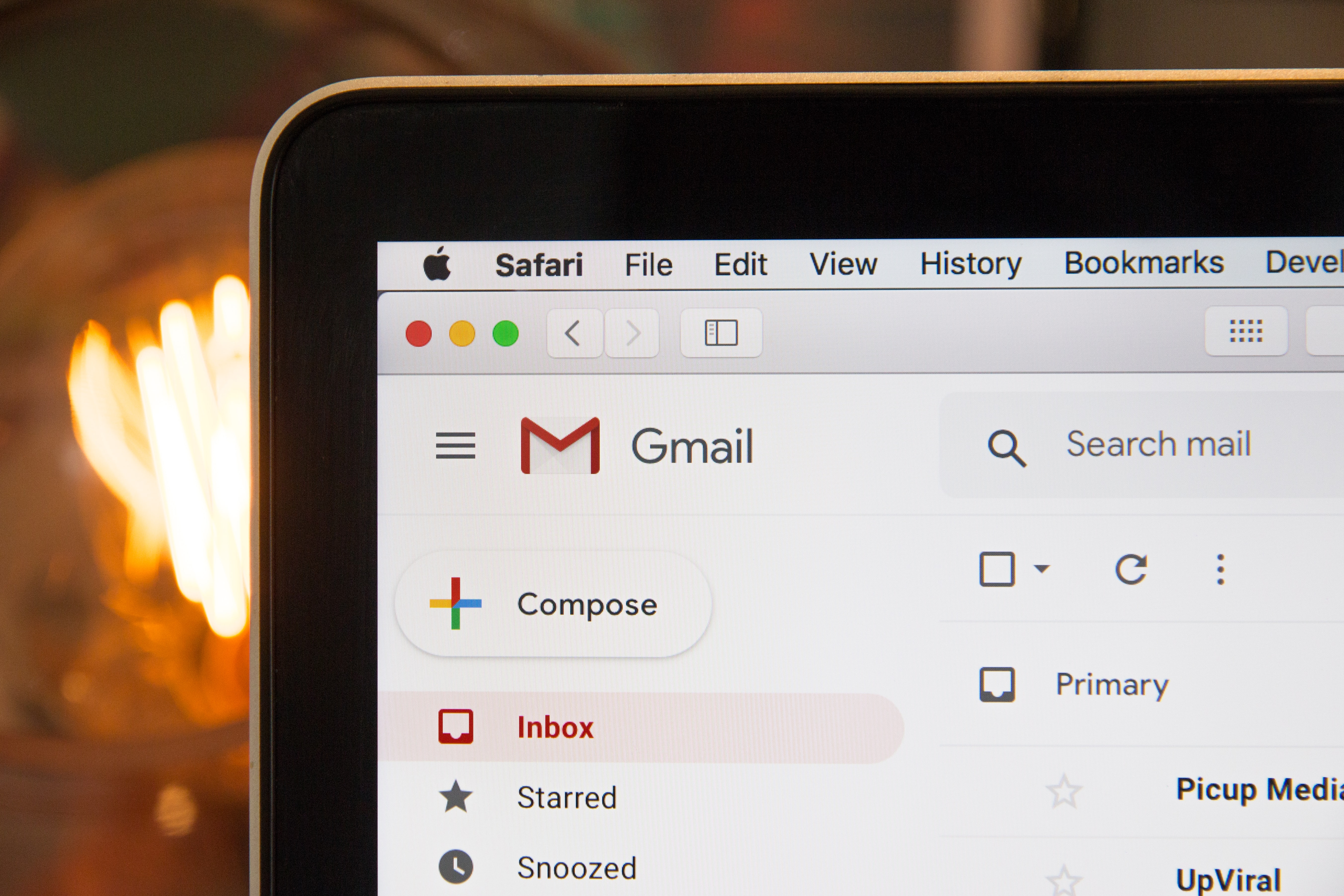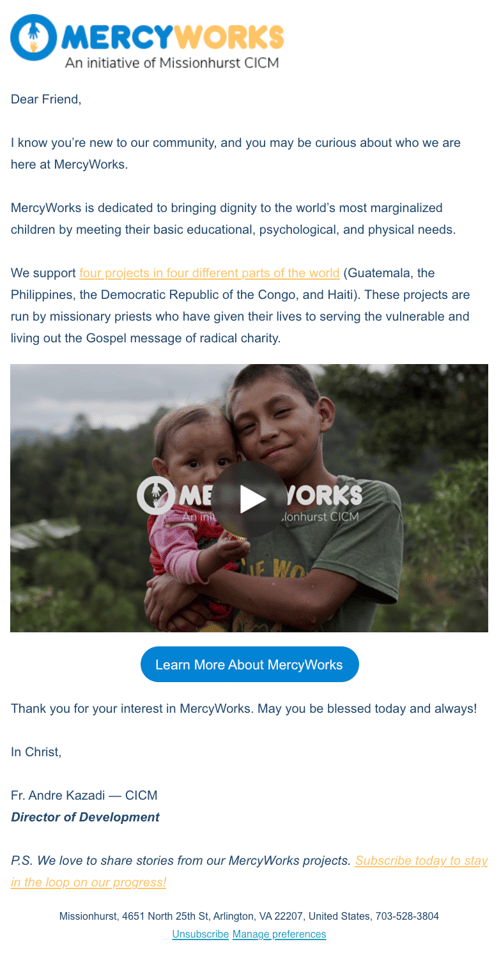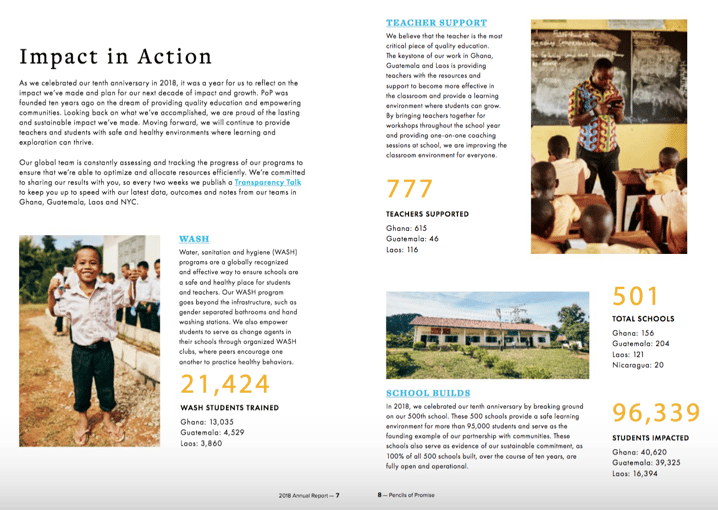5 Nonprofit Email Examples that Consistently Convert (and 3 Free Email Templates)

Four years after canceling my membership, I reactivated it and placed an order.
I love the idea and I loved the service, but honestly I just wasn’t using it enough so in 2016 I canceled my Thrive Market membership. Then, last week, I placed an order and re-subscribed to the service.
Call it pandemic-induced desperation, call it the latest effort in my never-ending health kick, but what really won me back was their emails.
I think the specific email tactic that worked was a re-engagement email (more on that below), but looking back on it, the majority of the emails I’ve received from the company have been engaging, creative, customer-centric, and just downright delightful to read.
And, kudos to Thrive, because four years is a long time to keep me on their list. But it worked, and I think there is a lesson to be learned there — it’s about the power of email.
Email offers the opportunity for storytelling, allows you to connect and reconnect with your support base, and encourages (and facilitates) action. However, there are some types of emails that convert more consistently than others. In this post, I’m going to dive into five types of nonprofit emails that consistently convert or offer insight into the health of your email lists.
Nonprofit Email Example #1—Welcome Emails: Like cookies from a neighbor
You’re likely already sending emails to new contacts or donors once they enter your database, but have you ever considered enrolling these contacts in a nurturing email workflow (a fancy word for a series of automated emails that takes the person from A through K to Z)?
A welcome series is typically 3-5 emails sent over the course of 3-4 weeks that introduce the contact to your brand, make them aware of your mission, share stories about your work, and invite them to take further action.
One of the best things about a welcome email series is that it can be completely automated with your CRM software, meaning individuals automatically begin to receive these emails after taking a qualifying action. Add in a few personalization tokens and your new contacts will feel individually welcomed and cared for, without requiring extra work on your part (aka a win-win).
Here’s a pro-tip: When crafting a welcome series, the first step is to determine your goals. Ask yourself: What do I want these emails to accomplish? What do I want the recipient to walk away with? What concrete actions do I want them to take?
After answering these questions, structure your emails around these major goals, building upon each consecutive email (like you’re continuing a conversation with a friend)!
Here’s the first email in one of our client’s welcome series (P.S. It has a pretty good open rate (30%) and click rate (4%).)
Nonprofit Email Example #2—Donor Story Emails: Sharing other donors’ “why”
I’m just going to come out and say it...compelling stories about children or widows in need are a dime a dozen. Before you get upset, I’m not saying they can’t be compelling (when leveraged correctly), they absolutely can.
But stories from donors, stories about how they found your organization, or why they give, or how participating in charity has impacted their lives — those stories are rare, and their impact is impressive.
It’s difficult to imagine what life is like in an orphanage in the third world. It’s hard to identify with that experience, because it is so far from my reality. It’s much easier for me to see myself in Sarah’s shoes: a mother who wanted to help her kids learn about their blessings by giving to those who are not as fortunate.
When Sarah shares her story about her children taking from their allowance and putting it in a family charity bank each month, suddenly I’m thinking to myself, “Wow. What an awesome lesson to instill in your children. I want to do that with my kids!”
You know the phrase, “you catch more flies with honey than vinegar”? Well, I think a similar principle applies here: inspiration motivates more than guilt.
So, how do you make this happen?
There are several things you can do to capture your donors’ stories. Here are just a few ideas:
-
Send a personal email to your top 25% most engaged donors (they open your emails, download your content, volunteer with your organization, are monthly supporters, etc...) and ask them to share their story: how they got connected with your organization, why they give, and how it’s impacted their lives.
-
Call some of your major donors or longtime volunteers and ask if they would be willing to share their donor story.
-
Include a PS line in one of your welcome emails that directs them to a form where they can share how they found you and why they have chosen to give.
-
Start a #WhyIGive challenge on social media and invite your donors to submit videos of themselves talking about the “why” behind their gift.
Ready to tell engaging donor stories that compel others to donate? Here’s one example of how to craft a donor story email:
Nonprofit Email Example #3—Re-engagement Emails: No hard feelings...
Email list fatigue — it’s a real thing. This is when your contacts stop opening and clicking your emails and your engagement metrics begin to decline.
While it might not seem like a big deal, it can present some problems such as reflecting poorly on your brand’s reputation, increasing unsubscribe rates, and skewing your email performance data.
So, what’s the best remedy for email list fatigue? A breakup (but a nice one).
This is where re-engagement emails come in handy, especially for nonprofit email marketing. This type of email is blunt, but often works marvelously to separate your engaged (but maybe busy) subscribers from those who are no longer a good fit for your organization. It is only sent to lapsed or inactive subscribers, those who haven’t engaged with your emails in a long time.
The gist of the email is this: “Hey we realized we haven’t heard from you in a while, and that’s okay! We just wanted to make sure you’re still interested in receiving our emails. You can click here to unsubscribe or reply to this email to let us know you’d still like to hear from us.”
Everyone who replies (or clicks another link in the email) remains on your lists, and those who don’t open the email can safely be removed from your list.
Although this might seem a little drastic, I promise this is another win-win situation. You are able to work on your list hygiene (cleaning out inactive contacts) and, at the same time, offer those who still want to engage with your organization, but maybe have been busy or uninvolved, a chance to double down on your relationship.
Re-engagement emails also benefit your lapsed subscribers, because it cuts ties (in the nicest way possible) and frees up space in their inbox.
Not sure what to say or how to craft this nonprofit email? Download and use this free re-engagement email template:
Nonprofit Email Example #4—Recap Emails: Here’s what we’ve been up to!
You know when those Timehop pictures show up on Facebook, or your iPhone decides to surprise you with a montage of pictures from the last year, or when your company calls its annual meeting to discuss the year in review (okay that last one was less sentimental than the first two).
But, each of these moments offers us something — perspective and a chance for reflection.
As a nonprofit organization, you are constantly trying to get people to buy into your mission and believe in your cause. A simple, and highly effective, way to accomplish these goals is to offer your subscribers their own moment for perspective and reflection.
Recap emails are those moments. These occur at regular intervals (annually, bi-annually, monthly) and their purpose is to summarize what has happened since the last recap.
This is from Pencils of Promise’s 2018 Annual Report, but these are the kinds of details and images that you could include in your recap email.
What should you include in these nonprofit emails?
Bottom line: anything that makes sense for your organization (and since this is a more informal type of email, feel free to get creative with it)! Here are a few ideas to get you started:
-
Major benchmarks you hit or milestones you passed
-
Project updates (include photos if you have them!)
-
Any kind of written content you published (blogs, newsletters, digital magazines, eBooks, prayer resources, etc…)
-
A peek behind the scenes (did you add employees or move office locations?)
-
Visuals (photos, videos, infographics, any type of visual you have!)
Nonprofit Email Example #5: Thank You Emails: Your best piece of real estate, hands down
It pains me to see thank you emails come into my inbox (after downloading a resource or making a donation) without a secondary plug (and tertiary for that matter).
Why? Thank you emails consistently have the highest open rates, out of any other type of email. And why is that, Maddy? Because it’s a captive audience.
They’ve already made a donation, downloaded your newsletter, or attended your event — they’re expecting your email and they’re going to open it! Don’t waste that precious space.
So, instead of simply saying, “Thank you for your donation, it will make a huge difference in the lives of these needy children,” try offering additional actions. Encourage the recipient to download another resource, read up on your latest campaign, browse your most popular blog posts, or engage with any other piece of content you offer.
Still unclear what one of these emails looks like? Check out this free thank you email template:
Nonprofit email marketing is your secret weapon in conquering your nonprofit’s goals
Anyone can send an email, but it takes intentionality to send emails that encourage your subscribers to take the next action.
Email is the great equalizer; it’s free for everyone to use — what it really comes down to is creativity, clarity, and strategy. Even if you are a small medical mission start-up, you have the same resource in an email as a giant like the American Red Cross. The organization that captures interest and attention will see higher conversion rates, no matter how big their subscriber list or budget is.
Even if you only pick one of these nonprofit email types to focus on in the next quarter, the return you could see on this new tool in your toolbox will be well worth your investment of time.
3 Free Email Templates for Nonprofits
You're committed to improving your emails. We are, too. That's why we're providing you templates to get started. We suggest starting here:
- Donor Story Email
- Re-engagement Email
- Thank You Email
And, if email strategy (or content creation) has you stumped, reach out to us — we would be happy to give you a few pointers to help you get started.
Looking for the right software or partner agency? We can help! Candor is a review platform for nonprofit tools and vendors. Get started by reading reviews or writing one of your own.

